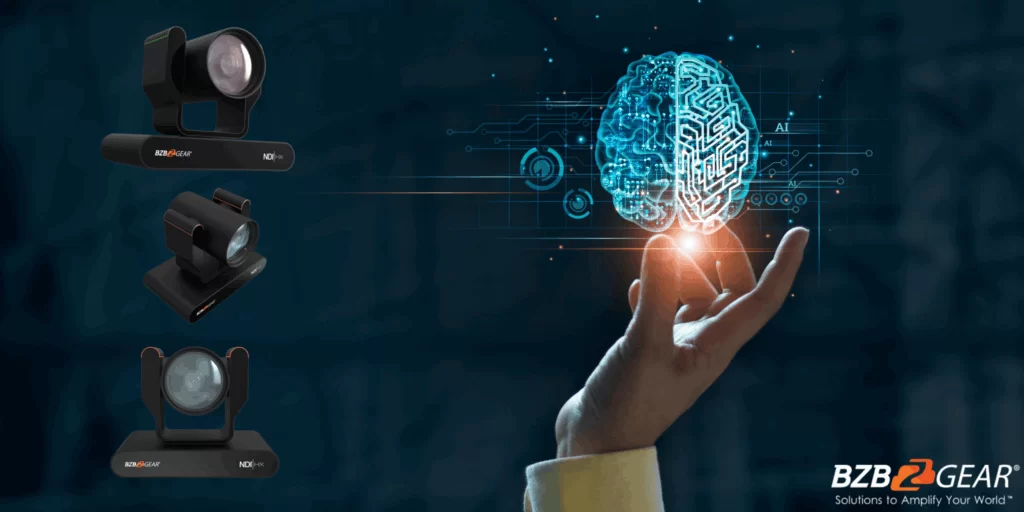How Artificial Intelligence is Changing PTZ Cameras

What happens when advanced artificial intelligence is applied to a PTZ camera? You get sharp auto-tracking at unparalleled speed and accuracy. The automation of PTZ cameras is here and it is also at BZBGEAR.
How AI applies to PTZ Cameras
One of the fastest growing products in regards to technological advancement in the AV industry is the PTZ camera. That is because of the recent application of artificial intelligence. The type of artificial intelligence used in these cameras is called computer vision. Computer vision is simply a field of artificial intelligence that enables computers and systems to extract significant information from images, videos and other visual inputs. These visual inputs are taken in by the computer and used for teaching purposes. Basically, computer vision enables a computer to see and understand its environment.
Computer Vision AI meets PTZ Cameras
What does computer vision have to do with a camera? PTZ cameras are equipped with computers that enable them to efficiently pan, tilt and zoom on command. Giving these tiny camera computers “computer vision” allows them to perform these functions independently. The computer vision AI trains the camera computer so it is able to perform image recognition which includes human recognition.
How is computer vision AI any better than a human at operating a camera? Computer vision works similarly to human vision. The difference is, computer vision AI trains the PTZ cameras to work as human vision, but much more effectively. Computer vision trained PTZ cameras process and analyze visual information at the rate of thousands of products per minute. This is far more advanced than what the human retinas, optic nerves and visual cortex are able to do. Also, with an automated camera that is trained to track its targets, mistakes are minimal to none.
The BG-ADAMO By BZBGEAR
An example of a PTZ camera with this technology is our BG-ADAMO. The BG-ADAMO is an auto-tracking PTZ camera that uses the latest human detection AI algorithms. The monocular tracking method of this camera uses only one lens to easily detect and capture human forms and moving objects in seconds.
The auto tracking is presented in two modes: Presenter Tracking and Zone Tracking. Presenter Tracking tracks its target everywhere, without the presenter needing to wear any receiving devices. It has strong locking and anti-interference capabilities giving presenters the flexibility to leave the stage and interact with the audience while continuously being tracked. Zone Tracking can be set to track a specific area providing a clear, smooth representation of what's being shown behind the presenter such as a whiteboard. This is why it is important for the camera to be able to process and analyze all aspects of its environment, so it is able to effectively do what is expected of it.
Overall, the future of PTZ cameras is an exciting one. With implementations of AI and even NDI, PTZ cameras will continue to advance.
To learn more about the BG-ADAMO, visit: the BG-ADAMO product page.
8.00 a.m. - 5.00 p.m. (PST)
10.00 a.m. - 3.00 p.m. (PST)
(by appointment only)


